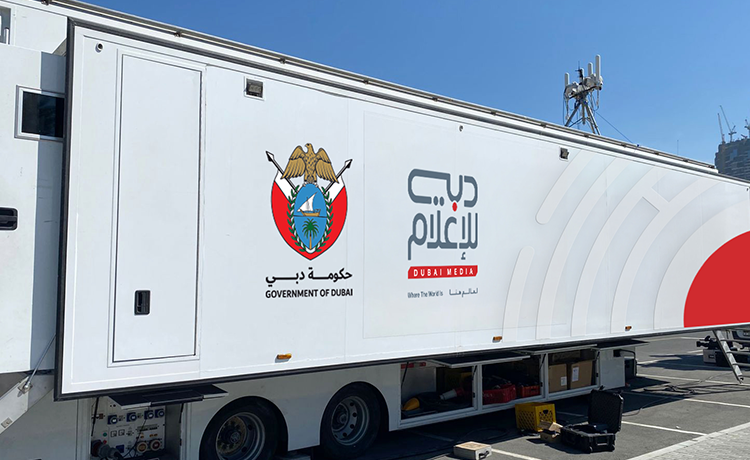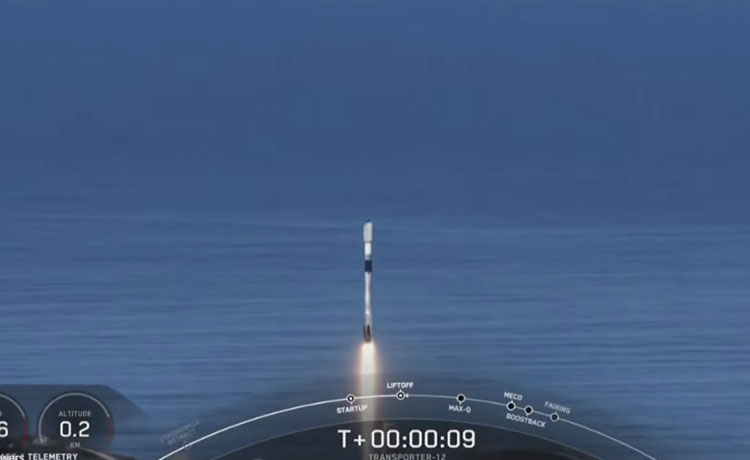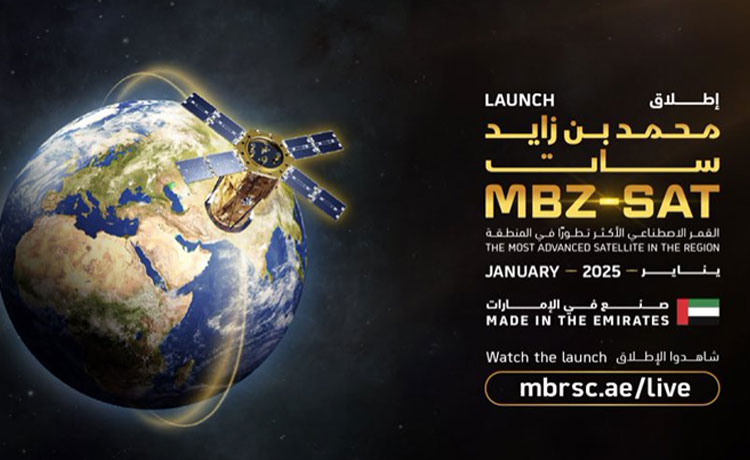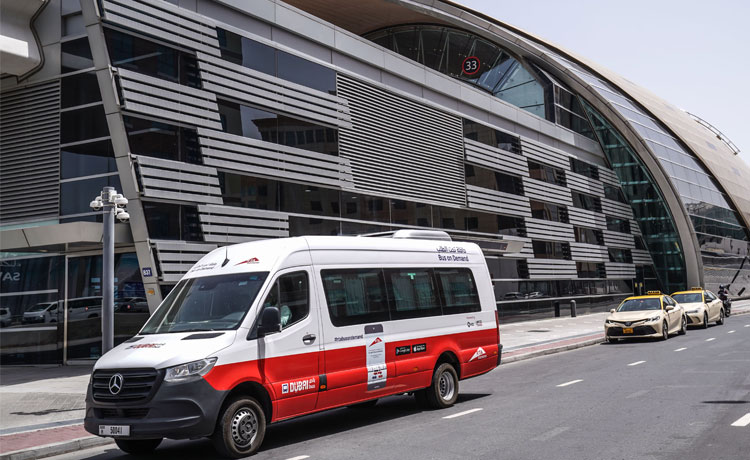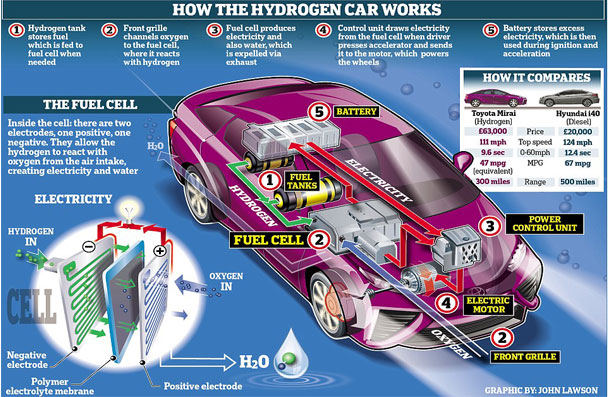
The Car That Runs on FRESH AIR!
Just imagine that instead of spewing out a noxious mixture of carbon dioxide, carbon monoxide, hydrocarbons, benzene and particulates, your car’s exhaust emitted only water. Yes, that’s right, just good old H2O, in a form so pure you could drink it.
It might sound like science fiction, but it is in fact reality, in the form of a new car that will appear on our streets later this year called the Toyota Mirai.
Instead of being filled up with petrol or diesel, the Mirai (the word is Japanese for ‘future’) is powered by the most common element in the universe - hydrogen.
The gas is inserted into the car’s tank just as you might use a petrol pump, and then, through the wonders of a fuel cell - which produces a chemical reaction between the hydrogen and oxygen in the air — it is converted into electricity, which in turn powers the car.
Incredibly, the only by-product of this process is water.
ynical petrolheads will doubtless dismiss the Mirai as a gimmick, which, like so many electric cars, probably only has a range of a few miles, and goes no faster than 40 mph. But they’d be wrong, as the Mirai is actually a proper car.
It can hit 111 mph, go from 0-62 mph in 9.6 seconds, and, most importantly of all, has a range of around 300 miles - enough to get you from Watford to Carlisle on a single tank. The ultra-strong carbon-fibre tanks can be filled in around ten minutes.
Of course, if you mention hydrogen as a means to power transportation, many people will think of the Hindenburg, the airship which exploded in a vast ball of flames over New Jersey in 1937.
But there is an extremely low danger of that happening with a hydrogen car, since the fuel cells are encased in tanks that are bulletproof. In fact, you have much more chance of being blown up by a traditional petrol tank in a crash.
So on the surface, it looks like cars such as the Mirai do have the potential to change the world. Next year, Honda will enter the market, and Ford and Nissan are also exploring the technology.
If all motor vehicles ran on hydrogen, then we would remove all the traffic pollution from our cities and streets. And with almost no demand for petrol and diesel, we would no longer be so reliant on oil-producing states in the Middle East.
At a stroke, the whole environment and economy of the planet would be transformed.
Perhaps inevitably, there are snags, as there usually are with rosy visions of the future. The first problem is cost. At the moment, hydrogen cars are seriously expensive. The Mirai, a four-door saloon, is due to go on sale for a whopping £63,104.
The next problem is where you are going to fill it up. You will need to find your nearest hydrogen filling station, and at the moment there are only 12 in the UK, with none further north than Sheffield. Some predict that there will be 65 of these stations by 2020, and it will cost around £65 to fill up.
Of course, questions of cost and infrastructure can always be solved by governments creating incentives - offering buyers grants, and even providing the hydrogen free.
This is already happening in Japan - a country increasingly concerned about its energy policy in the wake of the nuclear disaster at Fukushima.
Its government is heavily subsidising the purchase of hydrogen cars to the tune of £17,000 per buyer per car, as part of a £254 million programme to get 6,000 private hydrogen vehicles on the road by 2020.
Meanwhile, in the U.S., the California Energy Commission has pledged £130 million to provide nearly 70 hydrogen stations by the end of the next year.
The Californians are also providing more than £8,000 for those buying hydrogen cars, which takes a considerable chunk out of the cost of the Mirai, which is listed in America at a cheaper price of £37,000.



